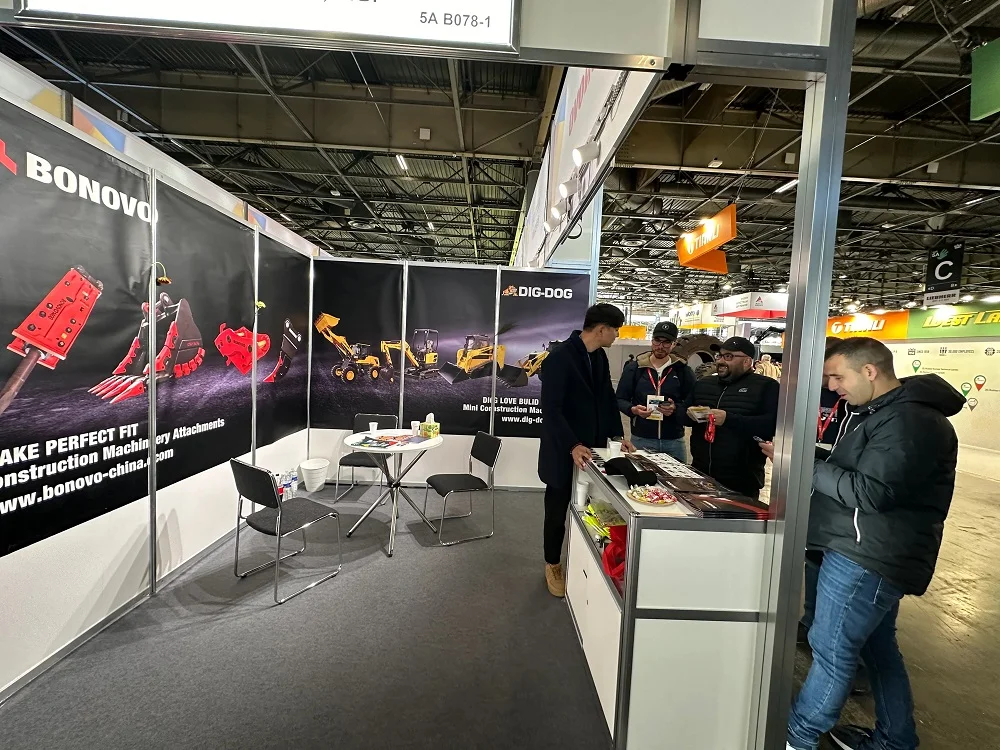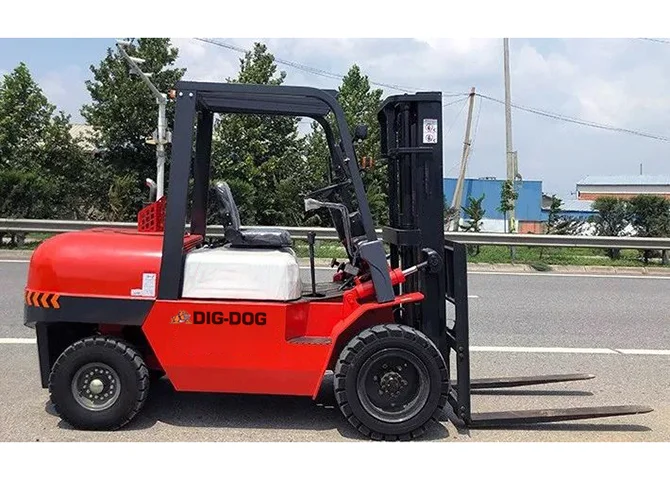Lubrication
Each normal lubrication points for the drive and driven sprocket shaft bearing, slewing platform and upper excavator, need add butter once before working or after 8 hours of normal work, fill the track chains roller with engine oil once, ensure the lubrication points working normally.
Track chains
The new track chains need to be checked every 10 hours, tighten and adjust the track chains according to the situation.(Generally the aging treatment can be completed after 30 hours.)
When the chains tension device of drive end and driven end all have reached the end of the adjustment stroke and the track chains are still loose,the tension device at both ends need to be returned to the innermost side first,then disassemble 2pc chains(one inside straight and one with an outer wing, with one track shoe), connect the ends of the track chains, and adjust the track chains tightness.
For long time no use, need clean the track chains with fresh water, fill butter to each roller to avoid rusting of the track chains, thereby reducing the service life of the chain.
Drive reducer:
Maintenance interval:
First oil change interval: 150 hours
Regular oil change interval: change the gear oil once every 1000 hours.
Model and capacity of oil: 85w-90 gear oil, capacity: 6L
Oil change method: when changing remove the travel motor to change the gear oil.
Or open the inspection hole on the side of the drive shaft, stretch into the arm and unscrew the motor oil drain, screw oil drain and replace it. Then restore the side cover of the inspection hole to prevent dirty things from entering.
Track shoes
Before working carry out the appearance inspection of the track shoes, check whether there is bending, loosening, falling and damage.
In case of wear, breakage and excessive bending(bending standard 1/20) it is necessary to replace.
Pontoon Undercarriage
Before working carry out the appearance inspection of the pontoon, check whether there is damage.
If the pontoon is damaged by external forces and there is leakage, it needs to leave the water immediately, check the damage and determine the maintenance plan. After the completion of the repair, need do the sealing test again to ensure that the pontoon is well sealed before it can be used again.
Safety and precautions of long reach arm operation
The way to use the long reach arm is basically the same as the standard arm, as the long reach arm is installed on the amphibious excavator, the operator should strictly follow the safety operation rules of the excavator and the safety operation rules of the water surface. In order to better finish the work requirements, correct use the long arm to operate, minimize the damage to the long arm, put forward the following requirements for the operator.
It is strictly forbidden to use bucket to make impact, also the bucket should not be lowered rapidly to the ground for excavation, otherwise it will cause damage to the bucket and arm.
It is forbidden to raise the rear part of the body and use its downward gravity to dig. As this undercarriage added weight and widen, and working in mud area, the rear end of the machine raise may not happen. But the force of the long arm will increase, so when digging should not force dig up, as far as possible to dig use the bucket to minimize damage to the long arm.
It is forbidden to use rotary force to operate construction and move stones and gravels with the rotating force of the machine. And couldn’t insert the bucket into the ground and turn the machine with rotary force. It is forbidden to operate steering when digging. The machine moves in the mud as far as possible not hooked to travel by the bucket, and couldn’t left-right operate to move when hooked, it is easy to cause the bending and damage of the long arm.
When the operation rotates, it is forbidden to fast turn-around rotation direction, also couldn’t release the handle quickly, especially when the boom and arm stretched, otherwise will cause the long arm and machine serious damage.
It is forbidden to drag and drop by machine, don’t pull the bucket in the way of walking, this operation will cause unexpected force in the structure of the machine. When the machine falls into the mud, try to use the machine’s move, add the long arm to assist support, not all use the long arm strength to climb out.
Cautions
The amphibious excavator can’t walk in dry land for a long time, as the walking wheel not have the ball and lubrication device, only hard to hard. If walking in dry land for a long time, will cause the roller friction to heat and anneal, reducing service life.
After finished the work in the wetland condition of the amphibious excavator every time, when drive on land, need clean the dirt on the pontoon in time and brush the oil on the chains to ensure that the chains not rust and extend its service life.
The amphibious excavator need fill the butter to the lubrication part everyday when using(pontoon 6, upper excavator 16), the lubricating oil split from the gap in the opposite side is best.
The amphibious excavator should use in the shallow water no more than 1.5m, don’t working in the water more than 1.5m. Could adjust the upper excavator to the front and rear balance of ±<200kg to go through in the deep water area. When going through not turn the upper excavator and change the balance of front and back, in case of turnover.
When the amphibious excavator working in mire condition, it is easy to get stuck in the mire and not walk, at this time, the bucket can be used to hold the bottom of the amphibious excavator to support the whole machine to move.
When the amphibious excavator working, don’t make the working device and the pontoon into a working range of 90 degrees to prevent the side of pontoon from deforming.
According to the working time in the all water condition of the amphibious excavator, check if the inflow inside of the pontoon. There are 3 inspection screw holes in the inner side of the single pontoon, after each inspection, the raw material belt should be wrapped on the screw stopper and then tightened to prevent leakage.
Before working or shifting of duty of the amphibious excavator, check if the beam connection of the pontoon and the bolts of the upper excavator junction have loosened, if the tightness of the track chains is appropriate, if there are any breakage in the inner and outer connecting plates of the chains and if there is any deformation of the track shoes.
The maintenance methods of the upper excavator refer to the maintenance methods of ordinary excavator.
Chain tension
The tightness of the chain is adjusted by 4 adjusting bolts on each pontoon. The chain adjust the tightness, the proper chain tightness is the key point to enhance the service life of the pontoon. It should be stopped to use immediately when figure A occurs at the driven end of the chain when working, need do the chain tension.

The chain tension loose the retaining screw of the bearing seat, in the below picture one, then adjust the tightening screw and tighten the 4 screws of the bearing when the chain is tightened to the right tightness, the chain is suitable, in the below picture two.


The chain should maintain a certain degree of wetness in order to better play its normal operation, bearings and lubrication points should be lubricated once every 8 hours.
When the chain is not in use for a long time, each roller should be lubricated to keep each lubrication points from rusting.
If you have other unclear places, you can leave a message to us at any time, our service team will give you a satisfactory answer.
 BONOVO Group at INTERMAT 2024 Paris Exhibiton
BONOVO Group at INTERMAT 2024 Paris Exhibiton
 A Ultimate Guide to Clamp Forklifts and Attachments
A Ultimate Guide to Clamp Forklifts and Attachments
 How To Choose The Right Compact Wheel Loader
How To Choose The Right Compact Wheel Loader
 How Much Does a Forklift Weigh?
How Much Does a Forklift Weigh?